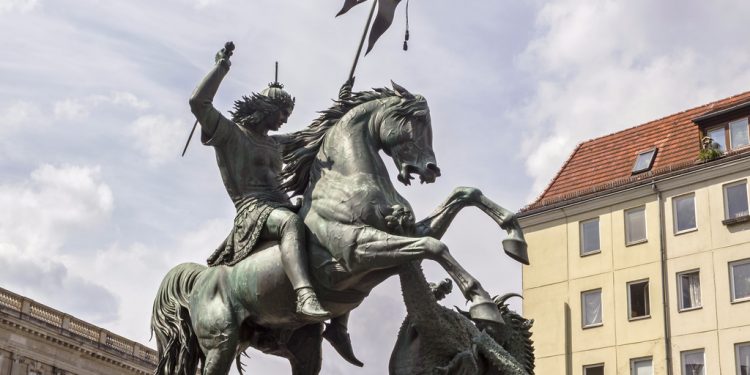
St. George’s Day
As the name implies, St. George’s Day is a celebration of Saint George, and it is a day that is observed on the date of his death. It is a holiday that is observed on April 23rd by most people, and on May 6th by Eastern Orthodox Churches.
The reason for this is that Eastern Churches use the Julian calendar, and May 6th on the Julian Calendar corresponds to April 23rd on the Gregorian calendar—the calendar that Western churches use. This can be a bit confusing considering that St. George was born on April 23, 303 AD according to the Julian calendar, which is May 6th on the Gregorian calendar. It can be even more confusing since its date on the Julian calendar can change due to its proximity to Easter.
This holiday is a feast day that is observed in many different countries around the world, particularly in ones that practice the Protestant and Catholic faiths. In the U.K., it is a national day, but it is not an official holiday. Other countries where it is observed include Georgia, Greece, Serbia, Canada, Bosnia and Herzegovina, and Croatia.
The History of St. George’s Day
St. George was born sometime during the third century in the area that is now known as Turkey. His father was a professional soldier, so he decided to become one too and quickly rose through the ranks in the Roman Army. He would eventually obtain the position of being a personal guard to Emperor Diocletian himself.
However, he would leave this position and refuse the emperor’s direct command when the emperor ordered the persecution of Christians. For his defiance, and his refusal to make sacrifices to Roman gods, he would be tortured and eventually executed in Palestine in 303 AD. That is where he was buried.
Around the 5th century, people began to venerate him, and around that same time, a temple was built and dedicated to him in Jerusalem. Eventually, a day celebrating his life was created, and this holiday was often celebrated with as much vigor as Christmas is usually celebrated.
After the Middle Ages, however, excitement for this holiday began to wane. In modern times, its profile has begun to rebound, and it has become more popular in countries where St. George is the patron saint. In some places, St. George is so popular that this holiday isn’t the only one devoted to him, but there are also holidays observed in November and December.
Saint George is the patron saint of England, Germany, Portugal, Russia, The Boy Scouts, and soldiers. However, he is probably best known for the fantastical tale of him slaying a dragon that was terrorizing a town in Libya and rescuing a princess. His true achievements are somewhat harder to decode, however.
While he is known to have championed Richard I during the Crusades and was believed to have been tortured and martyred after he tore up the edict which initiated Emperor Diocletian’s persecution of 303, it is extremely difficult to distinguish fact from fiction in many of the stories attributed to him.
St. George’s Day Celebrations & Customs
It is impossible to list all of the celebrations in every country that observes this day, but there are a few common themes observed on this day. Religious services are widespread on this day, and many people in the U.K. fly St. George’s Cross of England. People also wear a red rose on this day, and this tradition comes from the legend that St. George gave a rose to a princess once he saved her from a dragon.








